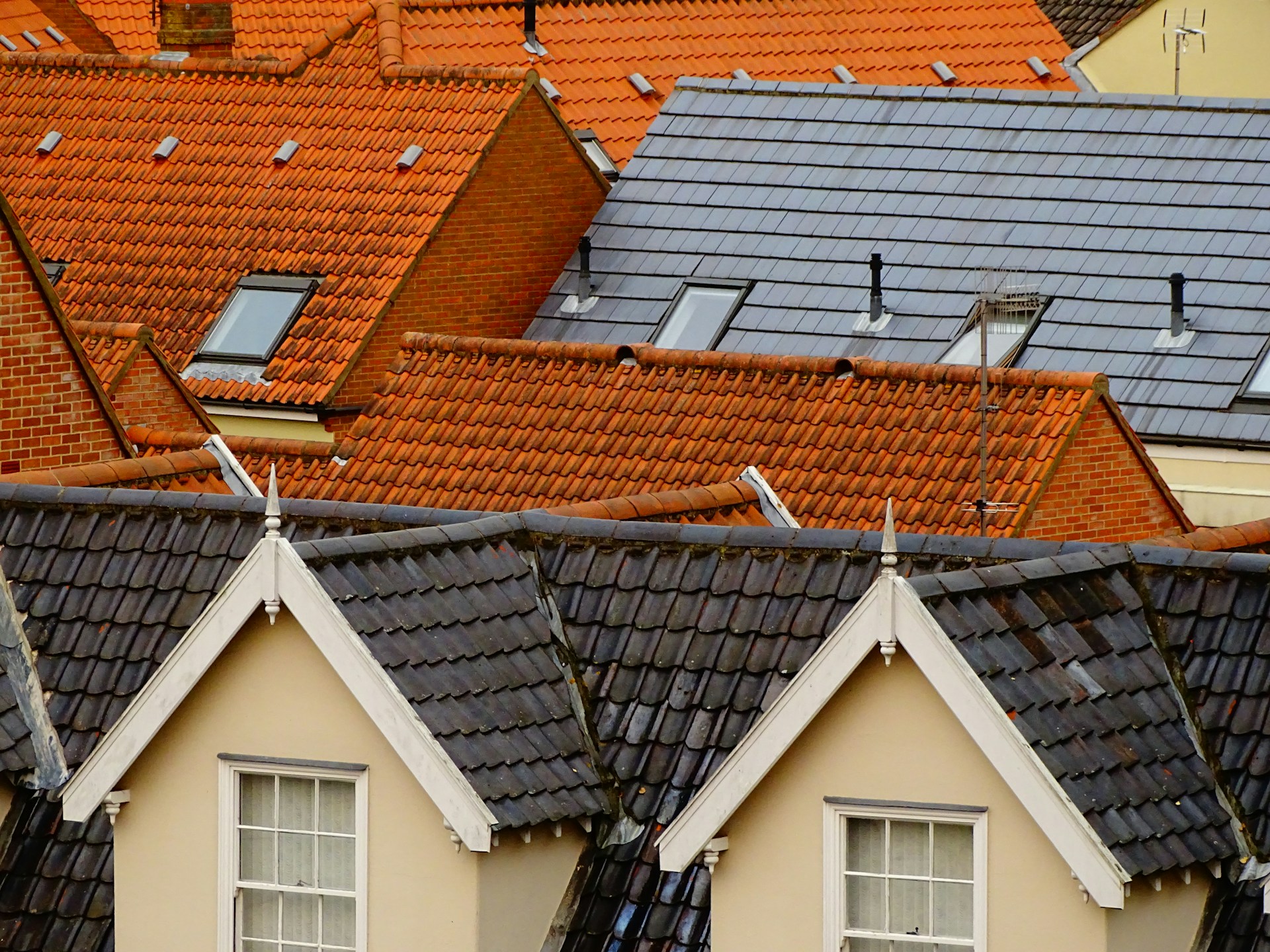The notion of designing homes that are both sustainable and safe is a rising trend in the UK building industry. One area of particular interest is the roof, an essential element of a house that greatly influences its energy efficiency and fire safety. The roof is often the first line of defense against heat, fire, and other weather elements, and as such, requires a careful selection of materials and design. So, how do you design a fire-resistant and eco-friendly roof for a UK log home? Let’s delve into the specifics.
Choosing the Right Materials
When designing a roof for your log home, the materials you choose can significantly influence the roof’s fire resistance and ecological footprint. Therefore, it’s crucial to consider both the fire-resistant properties and the sustainability of the materials.
A lire également : How can you apply smart home features to control indoor temperature fluctuations in a UK heritage home?
Several roofing materials offer both these qualities, including metal, clay, and certain types of treated wood. Metal roofing, for example, is non-combustible and reflects heat, reducing the risk of fire. Clay tiles, on the other hand, are also fire-resistant and possess excellent thermal properties that can help regulate indoor temperatures.
When it comes to eco-friendliness, it’s essential to consider the material’s longevity, recyclability, and energy efficiency. Long-lasting materials reduce the need for frequent replacements, minimising waste. Recyclable materials, on the other hand, reduce the environmental impact at the end of the roof’s life.
Sujet a lire : What are the best non-invasive methods for basement waterproofing in a historic UK property?
The Importance of Proper Insulation
Insulation plays a significant role in the energy efficiency of your log home. By reducing heat transfer, insulation helps maintain a comfortable indoor temperature regardless of the weather outside.
When it comes to fire resistance, insulation can also play a critical role. Certain insulation materials, such as stone wool or glass wool, can resist high temperatures, slowing down the spread of fire. These materials also have excellent thermal properties, contributing to the home’s energy efficiency.
Moreover, insulation can also enhance the overall sustainability of the house. By reducing the need for heating or cooling, insulation decreases the home’s carbon footprint. It’s worth mentioning that the installation of the insulation system needs to be done efficiently to ensure the best performance.
Incorporating Green Roof Design
The concept of green roofs, or living roofs, involves integrating vegetation into the roof design. Besides increasing the aesthetic appeal of the house, the green roof offers multiple benefits.
For starters, green roofs are exceptional insulators. The layer of soil and plants acts as an additional layer of insulation, reducing heat gain during summer and heat loss during winter. This helps reduce the energy needed for heating and cooling, contributing to the home’s overall energy efficiency.
As for fire resistance, green roofs can play a surprisingly vital role. The vegetation and soil can act as a firebreak, slowing or even stopping the spread of fire.
Fire-resistant Treatments and Systems
Finally, to maximise the fire resistance of your roof, consider incorporating fire-resistant treatments and systems. These could include fire retardant treatments for the roofing materials and the integration of fire-resistant barriers in the roof design.
Fire retardant treatments can enhance the fire resistance of otherwise combustible materials. For instance, certain treatments can increase the fire resistance of wood shingles.
Fire-resistant barriers, on the other hand, can prevent the spread of fire by creating a physical barrier between the fire and the rest of the house. This could be particularly useful in log homes, where the walls and roof are often made of combustible materials.
The Role of Building Codes and Regulations
In the UK, building codes and regulations play a significant role in shaping the design and construction of homes, including their roofs. These codes ensure that buildings are safe, energy-efficient, and environmentally friendly.
For roofs, building codes will stipulate certain fire safety requirements. For example, they might require that roofs are built with fire-resistant materials, or that they incorporate certain fire safety systems.
Building codes also often set out minimum standards for energy efficiency. For roofs, this might involve requirements for insulation, or the use of energy-efficient materials.
In conclusion, designing a fire-resistant and eco-friendly roof for a UK log home involves a careful selection of materials and design features. By considering factors such as fire resistance, energy efficiency, and environmental impact, you can create a roof that is safe, sustainable, and in line with UK building regulations.
Solar Panels and the Role of Renewable Energy
As we delve further into the design of a fire-resistant and eco-friendly roof for a UK log home, it’s impossible to overlook the role of renewable energy, specifically, the use of solar panels. If implemented correctly, solar panels can make your log cabin energy efficient while reducing your carbon footprint.
Solar panels harness sunlight and convert it into electricity. This renewable energy source reduces reliance on traditional energy sources, thereby decreasing greenhouse gas emissions. Furthermore, solar panels can provide sufficient power for most, if not all, of your home’s electrical needs, thus significantly lowering your energy costs.
Should you opt to install solar panels, remember to place them strategically to capture the maximum amount of sunlight. Depending on the type of roof system, solar panels can be installed directly on the roof or on a rack system. It’s also worth noting that, in some circumstances, planning permission may be required before installing solar panels.
Additionally, solar panels are inherently fire-resistant due to their glass and metal composition. However, the electrical wiring and components associated with solar panel systems should be installed and maintained by professionals to prevent electrical fires.
Wood Burning and Its Effect on Fire Resistance
As part of the home design for log cabins, a wood fireplace is often a much-desired feature, offering both aesthetic and practical benefits. It provides a cosy ambiance and a sustainable heat source during cold months. However, when considering a fire-resistant roof, it’s crucial to be aware of the effect of wood burning on your log home.
Wood burning can create hot embers that have the potential to ignite a roof, especially if the roofing materials include combustible elements, such as certain types of roof shingles or roof tiles. To mitigate such risks, it’s advisable to install a spark arrestor at the top of the chimney.
A spark arrestor is a device that traps or deflects hot embers, preventing them from landing on the roof and potentially causing a fire. It’s a small addition that can significantly enhance the fire resistance of your log cabin.
Additionally, maintaining a clean and efficient chimney and fireplace system can further reduce the risk of fire. Regular cleaning can prevent the buildup of soot and creosote, combustible byproducts of wood burning that can ignite and cause a chimney fire.
Conclusion: A Harmonious Blend of Safety and Sustainability
In summary, to design a fire-resistant and eco-friendly roof for a UK log home, one needs to consider multiple factors. Key among these include the choice of roofing materials, incorporation of effective insulation, adoption of green roof designs, application of fire-resistant treatments and systems, adherence to building regulations, the use of solar panels, and careful management of wood burning.
Incorporation of these features and practices will not only enhance the fire resistance of your log home but also its energy efficiency and overall environmental impact. Given the rising trend towards eco-friendly and sustainable home improvement techniques, such an approach is not only desirable but also incredibly timely.
From a wider perspective, developing such roofs represents a significant stride towards achieving a harmonious blend of safety and sustainability in our built environment. As we continue to witness the evolution of the building industry, such innovative approaches to design and construction will undoubtedly become the norm rather than the exception. Thus, the challenge of designing a fire-resistant and eco-friendly roof for a log home is not only achievable but also a step in the right direction.










